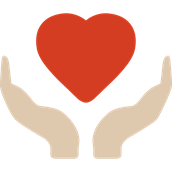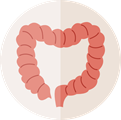Your Yearly Health Plan (Infographic)
It’s been a few weeks since you set your goal to improve your health this year, and it is going great – or maybe not so much. Whether or not you’ve made any progress, it's never too late to refocus on your health.

Get started by breaking down your health goals into smaller, more achievable objectives. Set an intention for each month and stick to them.
Here are some ideas to get you started
Get ready in January
Remember, good health is about more than exercising or eating vegetables. Get started by breaking down your goal into smaller, more achievable objectives.
Start with Your Heart in February
Have your health risk assessed through BMI, blood pressure and cholesterol screenings.
Bottoms up in March
March is National Colon and Rectal Cancer Awareness Month. Begin the month by striving to eat more fiber and less fatty meat. Both actions have shown a correlation with cancer reduction, including colon cancer. If you are over 40 or have risk factors, talk to your health care provider about scheduling a colonoscopy.
Spring into April Group Fitness
Join a group class, find a workout partner or talk to your workplace about group fitness incentives. Staying accountable to a workout partner has been shown to improve fitness levels and keep participants active longer. If you prefer the guidance of a professional, join a fitness center and meet with a personal trainer.
Graduate Your plate in May
The warmer weather also brings an abundance of fruits and vegetables. And local farmer’s markets are full of seasonal options. Strive to fill your plate with additional greens and less carbohydrates, sugars and fats.
Avoid the June Burn
Kick off the summer months with a skin cancer check at your physician’s office. While in the sun, be sure to cover up with a hat and long-sleeved clothing, and use at least SPF 30 sunscreen.
Make a Splash in July
Set the intention to cool off with at least 64 ounces of water per day. Staying hydrated can reduce the risk of heatstroke, and some studies have shown water intake helps with weight loss. Replenishing your fluids also helps you feel fuller longer.
Get into a Routine in August
The school year is starting, and many families are getting back on a schedule. Now is a great time to do a self-check. How is your health regimen going? Are you exercising as much as you pledged in the spring? Have you cut out a lot of calorie-laden and sugar-dense foods? Refocus on your food intake and your exercise output, just in time for a new school year.
It’s Worth a Shot in September
The vaccinations you received in childhood may not still be protecting you, so make sure you are up-to-date. It is important to get a yearly flu vaccine and to stay updated on vaccines like tetanus, shingles, pneumonia and others – particularly as you age. Many workplaces and community centers offer vaccination clinics. Check with your health care provider for vaccinations you may need.
Think pink (and blue) in October
It is no cliché. If you are over 40, or have risk factors, scheduling a mammogram could truly be the best thing you do for your health in 2018. If you are male and over the age of 50, consider instead getting your prostate gland examined. These aren’t the only important screenings for adults, however. The Centers for Disease Control has a full list of preventative care suggestions, which includes screenings, on its website.
Quit in November
Do you have any lingering habits that may be bad for your health? If you smoke, consider quitting. And if you were or are a heavy smoker, consider also getting a lung screening. This simple screening can detect, cancer and other concerns early, when they are most treatable. If smoking isn’t your habit, take a look at your health and consider quitting (or reducing) alcohol, calorie or fat intake.
De-stress in December
The holidays can be full of stressors, so take some time for yourself. Focus on exercise and healthful versions of your favorite indulgences to keep the stress at bay. And while you are at it, treat yourself to a tai chi or yoga session.


